pptx - Università di Pisa
advertisement
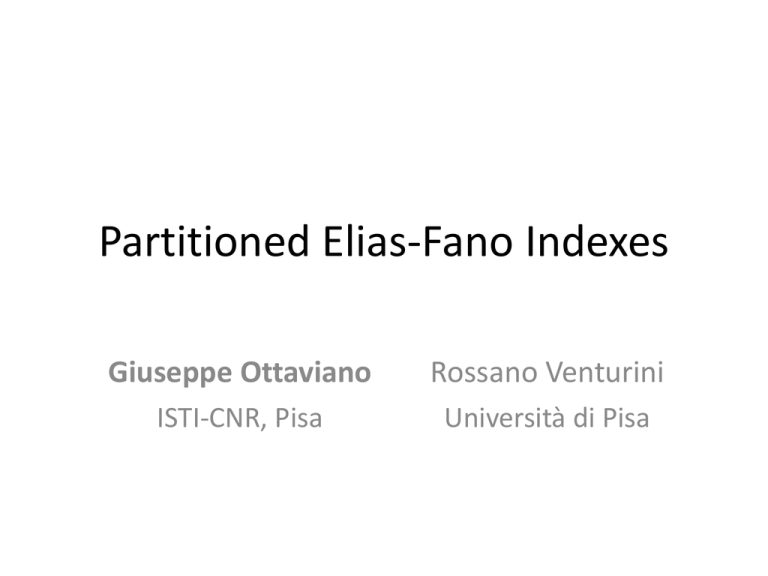
Partitioned Elias-Fano Indexes Giuseppe Ottaviano Rossano Venturini ISTI-CNR, Pisa Università di Pisa Inverted indexes Docid Document 1: [it is what it is not] 2: [what is a] 3: [it is a banana] a banana is it not what 2,Posting 3 list 3 1, 2, 3 1, 3 1 1, 2 • Core data structure of Information Retrieval • We seek fast and space-efficient encoding of posting lists (index compression) Sequences in posting lists • Generally, a posting lists is composed of – Sequence of docids: strictly monotonic – Sequence of frequencies/scores: strictly positive – Sequence of positions: concatenation of strictly monotonic lists – Additional occurrence data: ??? • We focus on docids and frequencies Elias Fano! Monotonic Sequences ai + i Docids Interpolative coding Strictly monotonic i åa ai – ai - 1 i i=0 Scores Non-negative Gap coding ai - 1 Strictly non-negative (Positive) Elias-Fano encoding • Data structure from the ’70s, mostly in the succinct data structures niche • Natural encoding of monotonically increasing sequences of integers • Recently successfully applied to inverted indexes [Vigna, WSDM13] – Used by Facebook Graph Search! Elias-Fano representation Example: 2, 3, 5, 7, 11, 13, 24 w – l upper bits 000 001 010 011 100 101 110 00010 00011 00101 00111 01011 01101 11000 l lower bits Count in unary the size of upper bits “buckets” including empty ones 11011010100010 Concatenate lower bits 10110111110100 110110101000101011011111010 0Elias-Fano representation of the sequence Elias-Fano representation Example: 2, 3, 5, 7, 11, 13, 24 w – l upper bits 00010 00011 00101 00111 01011 01101 11000 l lower bits 1101101010001010110111110100 Elias-Fano representation of the sequence n: sequence length U: largest sequence value Maximum bucket: [U / 2l] Example: [24 / 22] = 6 = 110 Upper bits: one 0 per bucket and one 1 per value Space [U / 2l] + n + nl bits Elias-Fano representation Example: 2, 3, 5, 7, 11, 13, 24 w – l upper bits 00010 00011 00101 00111 01011 01101 11000 l lower bits Can show that l = [log(U/n)] is optimal [U / 2l] + n + nl bits (2 + log(U/n))n bits U/n is “average gap” Elias-Fano representation Example: 2, 3, 5, 7, 11, 13, 24 w – l upper bits 00010 00011 00101 00111 01011 01101 11000 l lower bits nextGEQ(6) ?= 7 [6 / 22] = 1 = 001 Find the first GEQ bucket = find the 1-th 0 in upper bits 11011010100010 With additional data structures and broadword techniques -> O(1) Linear scan inside the (small) bucket Elias-Fano representation Example: 2, 3, 5, 7, 11, 13, 24 w – l upper bits 00010 00011 00101 00111 01011 01101 11000 l lower bits 1101101010001010110111110100 Elias-Fano representation of the sequence (2 + log(U/n))n-bits space independent of values distribution! … is this a good thing? Term-document matrix • Alternative interpretation of inverted index a banana is it not what 2, 3 3 1, 2, 3 1, 3 1 1, 2 a banana is it not what • Gaps are distances between the Xs 1 2 X X X X X X X 3 X X X X Gaps are usually small • Assume that documents from the same domain have similar docids … unipi.it/ unipi.it/ students unipi.it/ research unipi.it/.../ ottaviano X X X X … sigir.org/ sigir.org/ venue sigir.org/ fullpapers … … pisa X … sigir X X X X ... “Clusters” of docids Posting lists contain long runs of very close integers – That is, long runs of very small gaps Elias-Fano and clustering • Consider the following two lists – 1, 2, 3, 4, …, n – 1, U – n random values between 1 and U • Both have n elements and largest value U – Elias-Fano compresses both to the exact same number of bits: (2 + log(U/n))n • But first list is far more compressible: it is “sufficient” to store n and U: O(log n + log U) • Elias-Fano doesn’t exploit clustering Partitioned Elias-Fano XXX XXXXX XXXXXXXXX X X X X XXXX X XXX • Partition the sequence into chunks • Add pointers to the beginning of each chunk • Represent each chunk and the sequence of pointers with Elias-Fano • If the chunks “approximate” the clusters, compression improves Partition optimization • We want to find, among all the possible partitions, the one that takes up less space • Exhaustive search is exponential • Dynamic programming can be done quadratic • Our solution: (1 + ε)-approximate solution in linear time O(n log(1/ε)/log(1 + ε)) – Reduce to a shortest path in a sparsified DAG Partition optimization • Nodes correspond to sequence elements • Edges to potential chunks • Paths = Sequence partitions Partition optimization • Each edge weight is the cost of the chunk defined by the edge endpoints • Shortest path = Minimum cost partition • Edge costs can be computed in O(1)... • ... but number of edges is quadratic! Sparsification: idea n.1 Sparsification: idea n.1 • General DAG sparsification technique • Quantize edge costs in classes of cost between (1 + ε1)i and (1 + ε1)i + 1 • For each node and each cost class, keep only one maximal edge – O(log n / log (1 + ε1)) edges per node! • Shortest path in sparsified DAG at most (1 + ε1) times more expensive than in original DAG • Sparsified DAG can be computed on the fly Sparsification: idea n.2 XXXXXXXXX X X X X • If we split a chunk at an arbitrary position – New cost ≤ Old cost + 1 + cost of new pointer • If chunk is “big enough”, loss is negligible • We keep only edges with cost O(1 / ε2) • At most O(log (1 / ε2) / log (1 + ε1)) edges/node Sparsification • Sparsified DAG has O(n log (1 / ε2) / log (1 + ε1)) edges! • Fixed εi, it is O(n) vs O(n2) in original DAG • Overall approximation factor is (1 + ε2) (1 + ε1) Dependency on ε1 Notice the scale! Bits per posting Time in seconds Dependency on ε2 Here we go from O(n log n) to O(n) Bits per posting Time in seconds Results on GOV2 and ClueWeb09 OR queries AND queries Thanks for your attention! Questions?

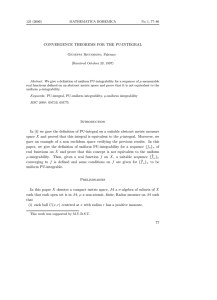

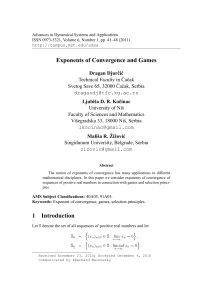
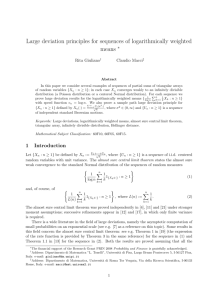

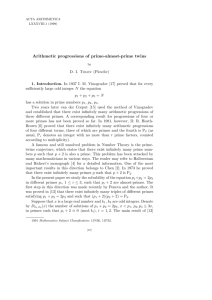
![[5b]_BahanKuliah_Ekotoksikologi_LC50(LethalConcentration)](http://s2.studylib.net/store/data/005611472_1-6b790fec9d1553013e0a8a188eb0d90f-300x300.png)
